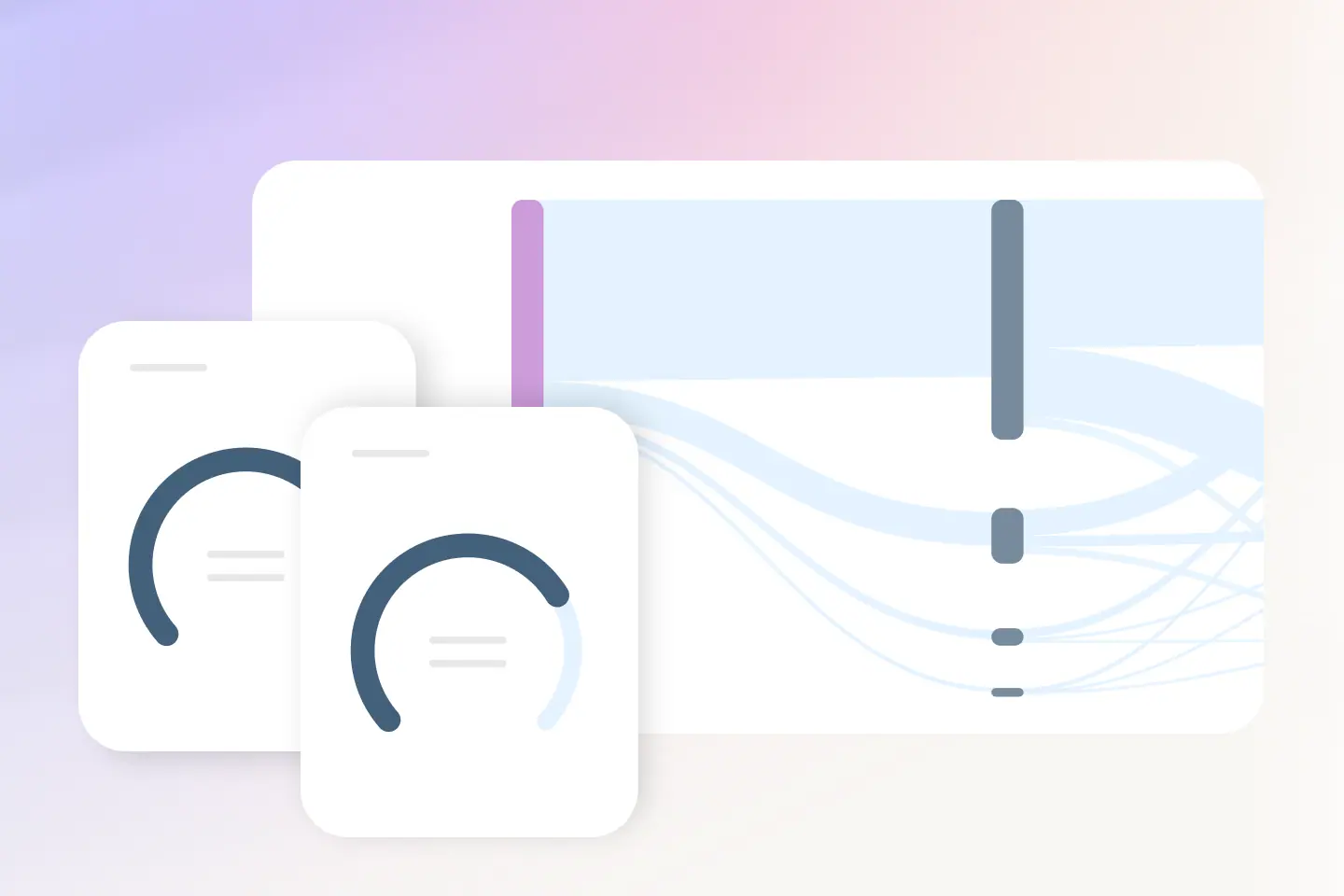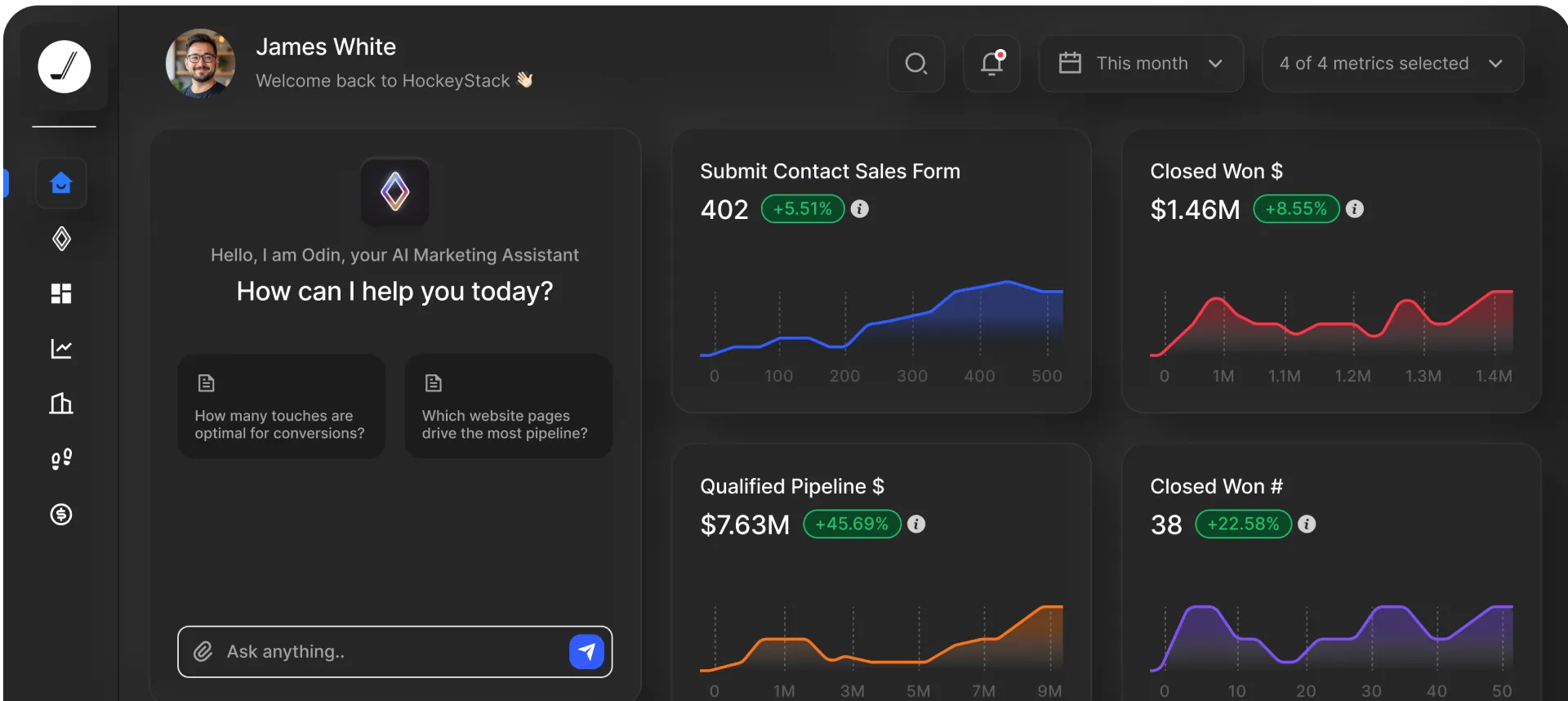Build vs Buy

Build vs Buy

As pipeline targets grow and GTM programs get more complex, teams hit the same challenge: we need to know what’s working, what’s not, and where to double down.
That’s when the idea comes up: Maybe we can build this ourselves. We have the data. We know the funnel. We just need better visibility.
It’s a natural instinct. But most of our customers who attempted this eventually ran into the same limits. Internal builds are slow, rigid, and miss the parts of the journey that matter most. Here’s what they learned, and why they chose HockeyStack.
“We Didn’t Have the Full Data”
Internal builds rely on what’s easily accessible: converted leads, CRM activity, and campaign members tied to form fills. But 90% of the buyer journey happens long before that, on anonymous website visits, unconverted impressions, and brand engagements that never show up in your CRM.
Example: A single contact books a call. But 10 other stakeholders from the same company have been visiting your site, engaging with your ads, and consuming your content for weeks. You won’t see any of that. Which means you’re making strategic decisions based on 10% of the picture.
Internal builds miss:
- Anonymous engagement from key accounts
- Pre-conversion website and ad data
- Stakeholder activity at the account level (vs. just the lead/contact)
- Granular performance at the asset level (not just campaigns.
- The ability to tie anonymous web engagement to pipeline and revenue without stitching together multiple tools
This is data you need if you actually want to understand influence, improve conversion, and move faster across the funnel.
“We Couldn’t Build the Models”
Most internal attribution models can reliably manage first-touch or last-touch attribution. The best builds are campaign-based multi-touch, but still rely on all touchpoints being trackable and structured as campaigns.
Here’s what was still missing:
- Top-of-funnel touches (which are never campaigns)
- Pre-conversion engagement (which never hits your CRM)
- Unconverted stakeholders (which means no campaign association at all)
Even when the data is right, the models are still limited. Multi-touch is directional, not causal. To make real decisions, you need lift reports, incrementality models, and layered analysis.
HockeyStack provides all of it in one place. Your measurement strategy should adapt to the question you're answering, not to the limitations of your tooling.
“We Couldn’t Move Fast Enough”
In most internal builds, answering a new question means building a new report. Want to break down pipeline by persona and product for enterprise accounts in EMEA? That’s a Jira ticket. Want to see what assets influenced deals from mid-market in Q3? That’s another one.
At a time when GTM teams need to become more data-driven, this creates friction, kills curiosity, and slows teams down.
With HockeyStack:
- Odin, our AI analyst, gives you instant answers to strategic questions. No filters, no setup, no manual digging
- It understands your funnel definitions, segments, and business logic out of the box
- You can ask about campaign performance, win rates, asset impact, and more, and get answers in seconds
- Odin doesn’t just analyze data. It recommends next steps, so you’re not left interpreting another chart
It’s not just about seeing the data, it’s about actually using it to make better decisions.
“Building with Flexibility is Really, Really Hard”
In internal builds, often the only people who can explore the data are the people who built it. Everyone else gets stuck in a queue of requests, only for the data to come back when it’s no longer relevant.
Small changes or requests get deprioritized due to high lift, discouraging your team from asking for more support.
With HockeyStack:
- Marketers get full access to easily slice data by product, geo, channel, ACV
- Lift, cohort, and journey reports are available out of the box
- You can apply different attribution models, funnel stages, and breakdowns without waiting on a data team
- Reports aren’t static dashboards, they’re flexible tools that evolve with your strategy
This flexibility turns reporting from a bottleneck into a daily habit.
“Maintenance is Exhausting”
Building is one thing. Maintaining is a whole other battle.
In order to stay useful and relevant, internal builds require:
- Custom integrations with every tool in your stack
- Constant schema updates
- Manual campaign tagging
- Endless logic maintenance across attribution, scoring, and segmentation
And often, only one or two people know how it works. When they leave, the system breaks.
Many teams who have tried to build end up back at square one within 9–12 months. And, even the best internal builds — the ones that have truly impressed our team — replicate the limitations of visibility that traditional attribution tools struggle with.
Early on, a simple internal setup can work well. You’re capturing form fills, tagging campaigns, building basic reports. It answers the first set of questions.
But as your team scales, the questions get more complex. Not just “what converted,” but “what moved the deal forward.” Not just “which campaign drove leads,” but “which touchpoints influenced pipeline.” That’s when the cracks in your foundation of GTM data start to show — you have the data, but it’s fragmented and the models are rigid. Getting a clear answer takes too much time.
When teams start looking for a system that reflects how their funnel actually works across teams, tools, and timelines, that’s typically when they’re ready for something like HockeyStack.
Predictive Analytics in GTM: Complete Guide for Revenue Teams
Your sales forecast is probably a work of fiction. Learn how predictive analytics replaces guesswork with data-backed certainty for your entire GTM strategy.


Ready to see HockeyStack in action?
HockeyStack turns all of your online and offline GTM data into visual buyer journeys and dashboards, AI-powered recommendations, and the industry’s best-performing account and lead scoring.

Ready to See HockeyStack in Action?
HockeyStack turns all of your online and offline GTM data into visual buyer journeys and dashboards, AI-powered recommendations, and the industry’s best-performing account and lead scoring.



